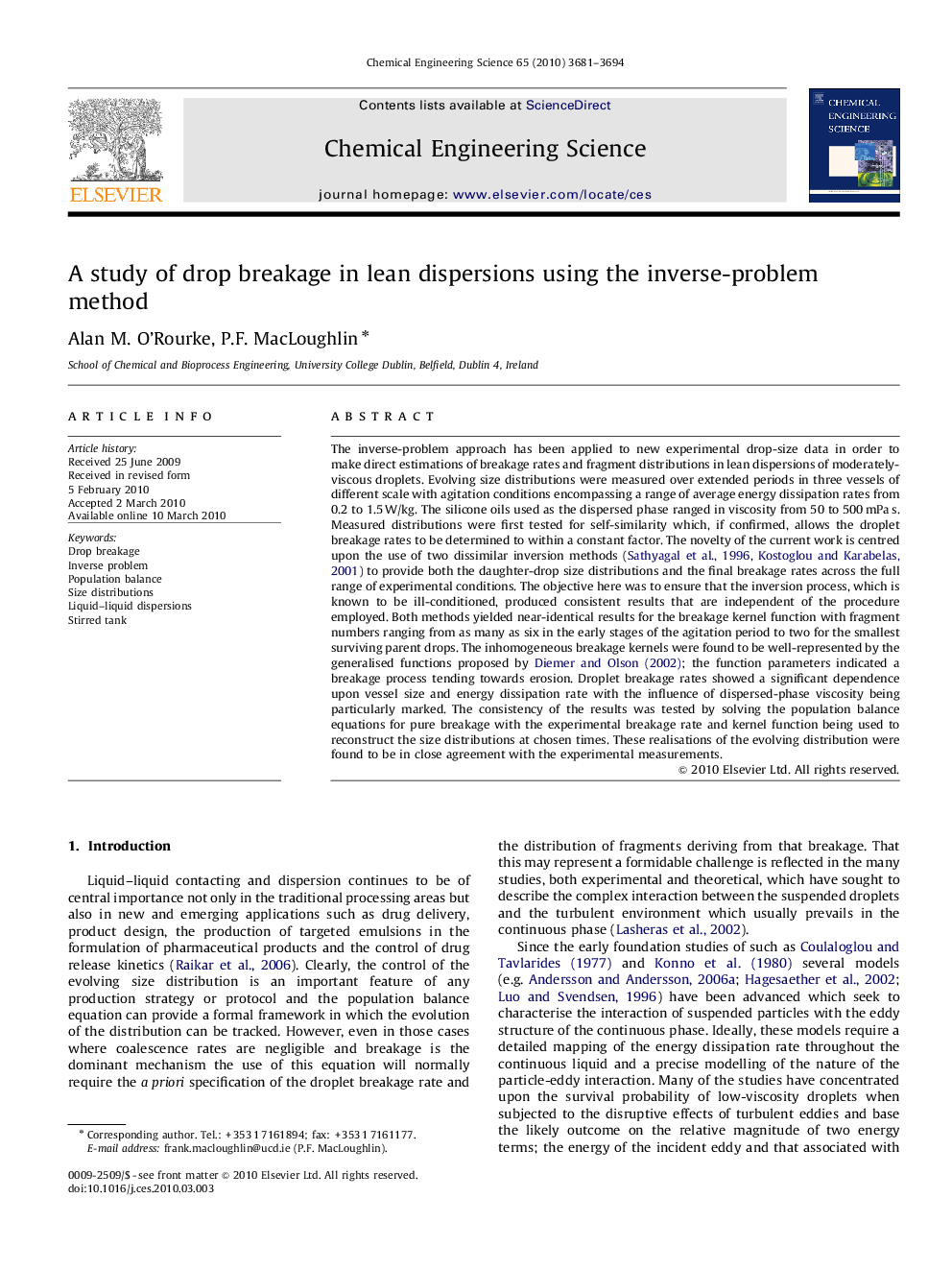| کد مقاله | کد نشریه | سال انتشار | مقاله انگلیسی | نسخه تمام متن |
|---|---|---|---|---|
| 157429 | 456971 | 2010 | 14 صفحه PDF | دانلود رایگان |

The inverse-problem approach has been applied to new experimental drop-size data in order to make direct estimations of breakage rates and fragment distributions in lean dispersions of moderately-viscous droplets. Evolving size distributions were measured over extended periods in three vessels of different scale with agitation conditions encompassing a range of average energy dissipation rates from 0.2 to 1.5 W/kg. The silicone oils used as the dispersed phase ranged in viscosity from 50 to 500 mPa s. Measured distributions were first tested for self-similarity which, if confirmed, allows the droplet breakage rates to be determined to within a constant factor. The novelty of the current work is centred upon the use of two dissimilar inversion methods (Sathyagal et al., 1996, Kostoglou and Karabelas, 2001) to provide both the daughter-drop size distributions and the final breakage rates across the full range of experimental conditions. The objective here was to ensure that the inversion process, which is known to be ill-conditioned, produced consistent results that are independent of the procedure employed. Both methods yielded near-identical results for the breakage kernel function with fragment numbers ranging from as many as six in the early stages of the agitation period to two for the smallest surviving parent drops. The inhomogeneous breakage kernels were found to be well-represented by the generalised functions proposed by Diemer and Olson (2002); the function parameters indicated a breakage process tending towards erosion. Droplet breakage rates showed a significant dependence upon vessel size and energy dissipation rate with the influence of dispersed-phase viscosity being particularly marked. The consistency of the results was tested by solving the population balance equations for pure breakage with the experimental breakage rate and kernel function being used to reconstruct the size distributions at chosen times. These realisations of the evolving distribution were found to be in close agreement with the experimental measurements.
Journal: Chemical Engineering Science - Volume 65, Issue 11, 1 June 2010, Pages 3681–3694